Good evening Millers — and a special welcome to the 17 new members who joined us yesterday to read Joshi’s eye-opening investigation into a local company calling itself a “housing association”, whose long leases on hundreds of flats have turned social housing into a “lucrative opportunity” for private investors.
Our weekend read today continues a series we’ve been running about university life, following on from our very popular long read about the experiences of students during the pandemic and our piece last week about where on earth the city is supposed to house its ever-growing student population.
In today’s piece, Ella Robinson — who is in her final year at the University of Manchester and just finished as editor of The Mancunion newspaper — writes about a curious corner of the uni where life feels very detached from the mainstream student experience. What does the old-fashioned St Anselm Hall tell us about what students want — and need — from their university?
By Ella Robinson
Alanna* didn't want to go to St Anselm Hall, but after her initial choices were blocked by the system, she felt lucky to have any accommodation at all. When she was asked to put on a gown, sit in a cavernous dining hall out of Harry Potter and listen to a Latin grace before dinner, “it felt like a joke except it was obviously serious.”
Some of her new friends refused to come down for dinner at all. She had envisaged moving to a big city and having a great social life but instead, she felt like a “secondary school kid at boarding school” being encouraged to make Mother’s Day cards while the friends from her course were pre-drinking in their Fallowfield flats.
St Anselm — the University of Manchester halls of residence affectionately known as Slems — has been described to me as “the Northern Oxford”, “like Hogwarts” and even “cult-like”. Founded in 1907 and male-only until just six years ago, Slems is the university’s “biggest kept secret”. Despite three years as a student, I hadn’t heard of Slems until recently. And after telling friends I was writing this story, they asked: “Wait, that’s a University of Manchester hall?”
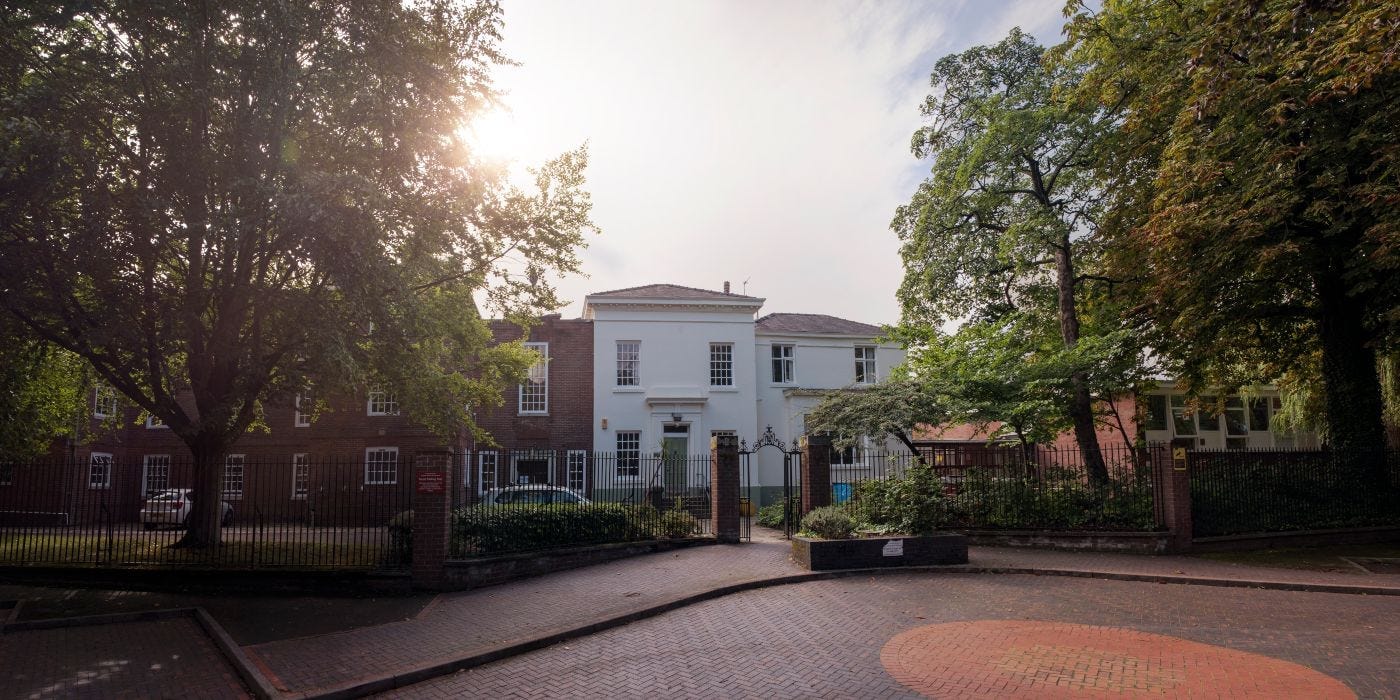
The hall isn’t what you’d expect from the University of Manchester — in fact, it was founded as an Anglican Training College originally, and taken over by the university in 1956. When one resident called Alice came across St Anselm’s initially, she was surprised. “I was very intrigued to see that it was a collegiate style at Manchester, which is, to my mind, one of the most left-wing, redbrick universities.”
After someone told me about St Anselm, I wanted to find out more about this place — this little corner of the university that some describe as an anachronistic Oxbridge fantasy land in the heart of Manchester. Earlier this year, I co-wrote a story for The Mill about the experience of students during the pandemic, and we overwhelmingly focused on the mainstream student experience: house parties at the infamous Oak House and pre-drinking in houses in Fallowfield.
But for obvious reasons, that version of university life doesn’t appeal to everyone. In fact, it probably excludes quite a large number of students from overseas (there are more than 10,000 international students at the university, around a quarter of the total intake) who are less likely to embrace a heavy-drinking culture or people who come from more religious or socially conservative backgrounds. Was that what St Anselm Hall was catering to? Or, as I had heard from one person, was Slems actually drinking the rest of us under the table?
Benedictus benedicat
Students describe Slems to me as a bit of an oasis. “Classic English style, very boarding school vibe,” says one former resident. “It was lovely, quite beautiful”. There’s a courtyard in the middle of the rooms with a cherry blossom tree. The chapel is a space for reflection, with no WiFi and brilliant acoustics — students frequently play the piano or flute in there and it hosts debates as well as inclusive prayer services.
Hugh Bearn says that for as long as he has known it, St Anselm Hall has always been fighting for its existence. He was the in-house chaplain from 2017 to 2022 and a Slems student resident in the 1980s. “There are political and other sorts of agendas, aren’t there, about how the university should present itself,” Bearn tells me. “And I don’t think Slems fitted the bill. A bunch of undergraduates who wear gowns and have chapel — it’s not exactly the flavour of the month is it?”
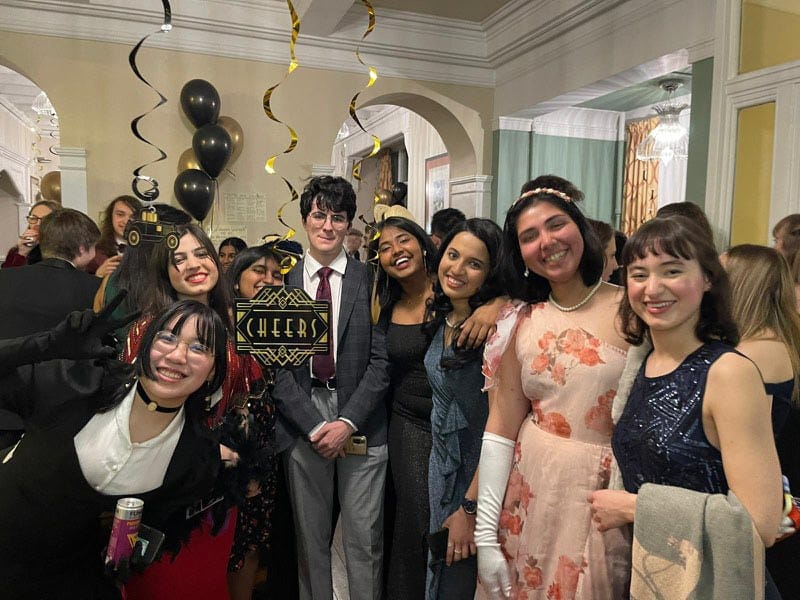
These gowns are the first thing most Slems residents mention. As Oak House freshers are cooking yet another dinner of pesto pasta, Slems students are filing into the dinner hall for a three-course meal. “You had to be there 15 minutes early, and you had to wear a university gown or you weren’t allowed in,” says one former resident.
Once everyone is seated, announcements of upcoming Slems events like Secret Santa or Bollywood Night are made by people standing on their chairs. Then the person at the end of the first table will be asked to bang the ceremonial spoon against the table three times. “And then the priest who had been waiting outside for this dramatic entrance, would then come in and say benedictus benedicat which is like a grace in Latin. And then the meal would start, but we didn’t get a choice, it was just brought to you.”
The dinner hall is laid out with three long vertical tables for the students, and a top or high table set horizontally. In all student halls, there are BNOCs or ‘big names on campus’ — usually the popular students, like DJs with big Instagram followings. In Slems the ‘big names’ are elected. The JCR (Junior Common Room — an Oxbridge term for an elected student body which organises events) aren’t necessarily popular, but they’re well known and they wield power. And at dinner, they sit at the top table.
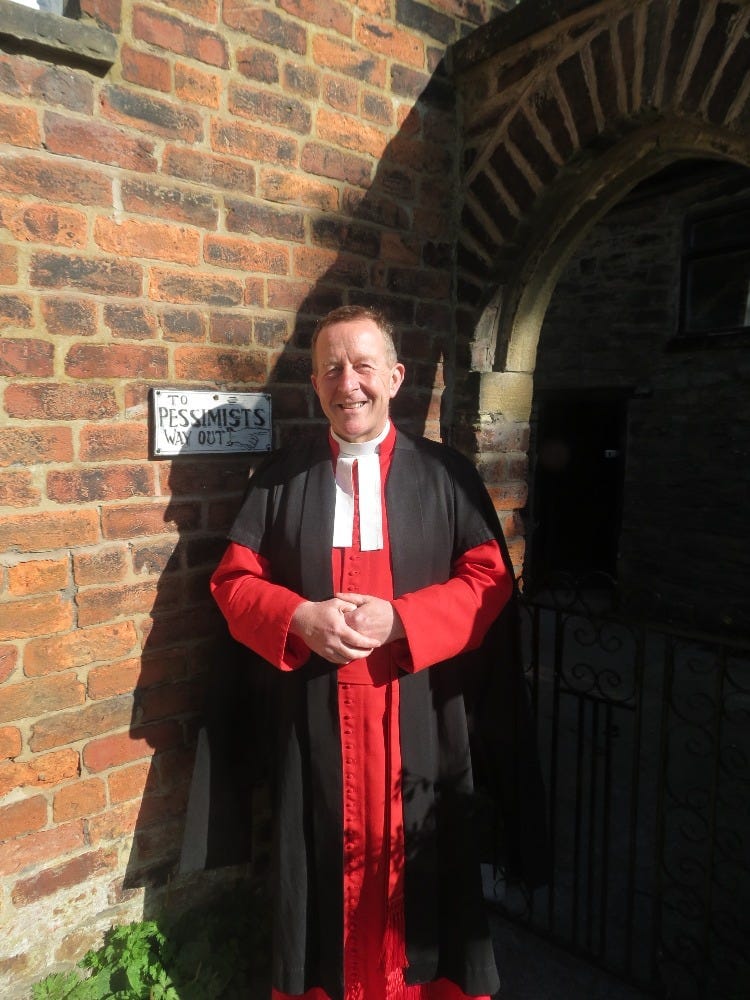
When the JCR stand up and say benedicto benedicatur, everyone must stop eating and follow them out of the hall. The current secretary says they can see when everyone has finished, but my friend told me she’d seen people being forced to stop before they were done with their meal. As one person put it to me, for £177 per week, you would hope you could finish your dinner.
You might be wondering at this juncture — quite reasonably, I think — what on earth is going on. A university halls of residence in 21st century Manchester banging ceremonial spoons and filing out of dinner at the prompting — in Latin — of their elected and berobed rulers. Is this a place where people come to escape from the real world? Is it a slightly embarrassing re-enactment of life at a pre-war university, before women and working-class people and meritocracy came and ruined everything? Or is there actually something very positive about St Anselm that I was missing?
‘It did feel like a lot’
Student opinions on the formal dinners differ greatly, from “funky” to “kind of stupid”. After Covid, some students began to protest against the rules — coming down without their gowns and signing a petition, which in turn prompted the JCR to give long speeches about the importance of gowns. I’ve been told it caused something of a scandal at St Anselm, and as a result, things began to change.
Formal dinner is now only twice a week, Slems is run by a hall committee system under the Students’ Union, and it sounds a bit more casual. The current hall committee member Chloris told me the freshers now do stuff amongst themselves — “like last Monday, they had this pyjama thing where everyone wears pyjama under their gowns because nobody really cares what you wear under your gown.”
But this change pales in comparison to the biggest transformation at St Anselm: admitting women. After all, this was by all accounts the last university-owned male-only hall in the UK, only allowing women to join in 2017. “Nobody told us previously it had just been a guys' hall,” says Isla, who joined in 2017, “but we found out when it was just guys in the previous years still living there”.
Isla had been to an all-girls school before university so she felt rather overwhelmed. She says in her first two weeks in the hall, she wanted to leave. The returning boys were already a close-knit community, the hall was quite demanding on her time and “the dinners were kind of stressful”. Along with the typical fears of starting university and getting to know a new city and new people, “it did feel like a lot”.
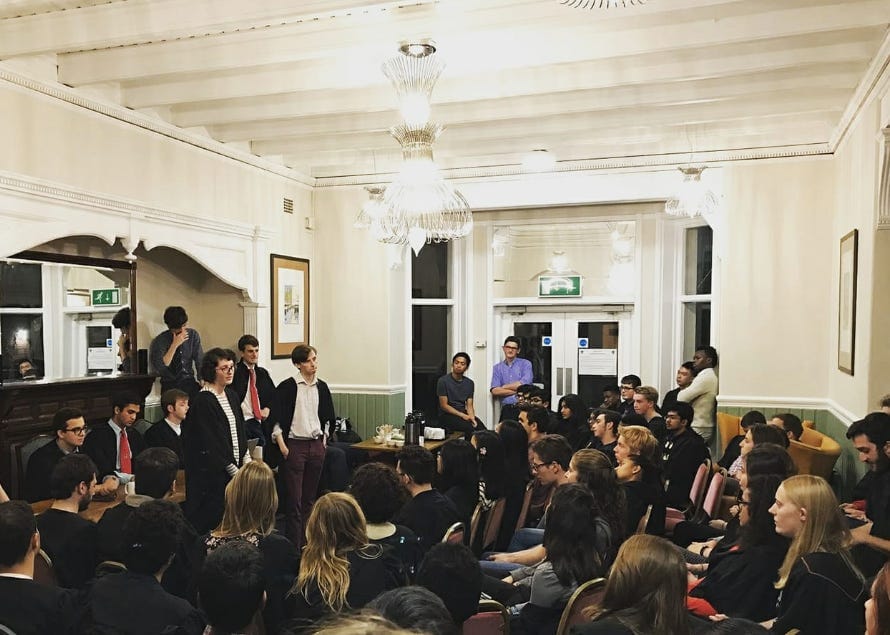
“But then I kind of got used to it,” she says, explaining that the aspects she had originally found so formidable, like formal dinners, became a chance to chat and get to know new people. “I actually really loved it enough to stay a second year,” she tells me.
One student estimates that around half of the residents at Slems are international students — some of whom might be attracted to the “boarding school vibe” and others who may want a place to live that feels a little more enclosed and small-scale in a city where the university experience is vast and chaotic and — increasingly — high-rise. St Anselm has traditionally had a lot more support for its residents than a normal university block, with wardens and tutors and lots of students who return for a second year and give the place more cohesion and continuity.
Chloris, the secretary at St Anselm, is an international student and describes herself as an introvert. For visa-related reasons, she arrived in Manchester late in her first year and “escaped most of the formal dinners” because it seemed to her like everyone else had already made friends. “But then I basically got adopted by a bunch of extroverts,” she says. In fact, she thinks because Slems is “so small”, people noticed when she wasn’t taking part and helped her to settle in. “When you live together and eat together it just kind of becomes inevitable that you make really good friends here.”
That picture of a kind, supportive community doesn’t match how Bearn remembers things in the days before women were allowed in. “There was a period in St Anselm Hall when it became slightly unpleasant,” he tells me. According to the former chaplain, during the ‘lad culture’ era at the turn of the century, the hall developed a “really boarish, overinflated, masculine,” atmosphere, “where everyone gets pissed all the time.” This was a revival of the 1970s Slems experience jokily depicted in the Hall Floreat magazine, where “one trips over the various inebriated bodies” and the boys are seen “drooling over page 3 in the Sun.”
Bearn thinks the decision to make the hall mixed was a reaction to the testosterone-charged early 2010s, and credits the women who joined the hall for keeping it going and changing Slems for the better.
Part of the appeal of St Anselm is that it is in many ways a self-contained community. It has its own bar — reportedly the cheapest in Manchester and gifted by one of the alumni — as well as a library, TV room, squash courts, gym, snooker room, common rooms and the chapel. They even have their own ties and teddies emblazoned with the Slems crest. “Practically you could live in the hall and you wouldn’t have to socialise outside,” said Isla, who ended up staying for two years.
I would love to give you a first-hand description of St Anselm Hall but despite repeated attempts, I’ve not been able to arrange a visit. My messages have mostly gone unanswered, apart from the odd reply written in the passive tense (“I’ve been informed that I’m not allowed to speak about a Manchester hall of residence in a private manner”).
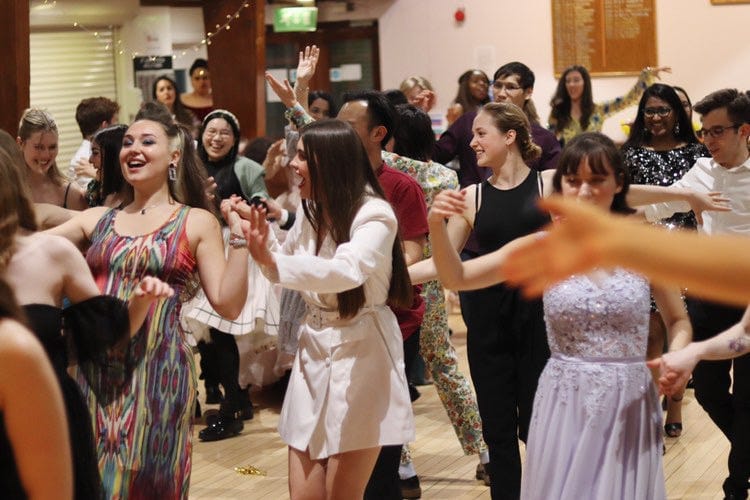
This isn’t university policy so presumably, somebody has told on me. And I’m not surprised that a place that has a bit of a mixed reputation might be nervous about publicity. Some people describe Slems as having “strange vibes”. “Normal people would not choose that hall to live in,” one student says. “You’ve got to be a bit weird and wacky.” Another told me the decorations for most of the communal spaces “were just things about the war, and all the boys who’d gone off and fought in the war.” She’s referring to ‘The Fallen’’, an archive project of the 24 Anselmians who died in the world wars, which can feel a little oppressive (“when you’ve just got everywhere around you, this boy actually won a medal before he died, aged 19”).
It also has a reputation as a place for Harry Potter fans and Oxbridge rejects. Bearn says this mischaracterisation has lasted for decades. “They would imagine because we wore gowns or that sort of thing, that we were a bunch of Hoo Ha Henry public school boys. And of course, that was not ever the case.” He points out that the hall was originally founded to cater for poor men who had no means to receive a university education. “But just because you put a gown on doesn't make you a snob does it?” he adds. “You're not making some sort of social commentary on life.”
Perhaps owing to its reputation, Slems receives the lowest number of applications of all the halls from first year students. But it also boasts the highest return rate for second years. About 30% of students stay for another year, some of them staying for their entire degree. Doesn’t that tell us something?
If the luxury purpose-built high-rise blocks towering over Oxford Road represent one vision for the future of student living in Manchester, Slems points to the need for something different. So much of university culture can feel transient, chaotic and even uncaring. St Anselm Hall, according to many of the people I’ve spoken to, is reassuringly small and community-driven. It’s easy to sneer at the ceremonial spoons and the Latin prayers, but this place seems to offer something important to its residents, particularly to introverted souls or international students who have moved to the other side of the world, often without any friends or community around them.
“We would happily survive without wearing some gowns for dinner, that’s irrelevant,” Alice tells me. What matters to her is the “caring and compassion that people have for each other when you live in that environment.”
In most uni halls, the ‘organised fun’ events aren’t well attended unless students are bribed with free pizza or alcohol. Community is built within flats and friendship groups but not the wider block. “Most halls are just parties as always, nothing special. But we had something different,” said Alexandra, who played Julius Caesar in the annual Slems play, which has been performed every year since 1950.
A lot of the Oxbridge-y aspects of St Anselm — wardens and tutors, for example — have now been phased out as the university seeks to bring the hall more in line with its other accommodation. But might that be a mistake? I expected this story to be about a weird and antiquated world that somehow still survives in modern Manchester. But it might be more productive to ask why it has survived — and whether the tradition and supportiveness of a place like this might actually be something people yearn for in the crazy, anxious and sometimes scary experience of student life.
More great Mill reads this week

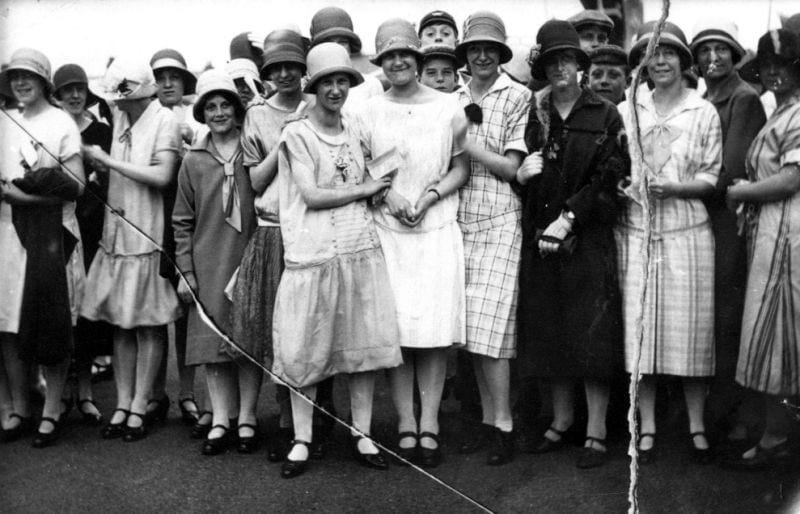

Comments
How to comment:
If you are already a member,
click here to sign in
and leave a comment.
If you aren't a member,
sign up here
to be able to leave a comment.
To add your photo, click here to create a profile on Gravatar.







